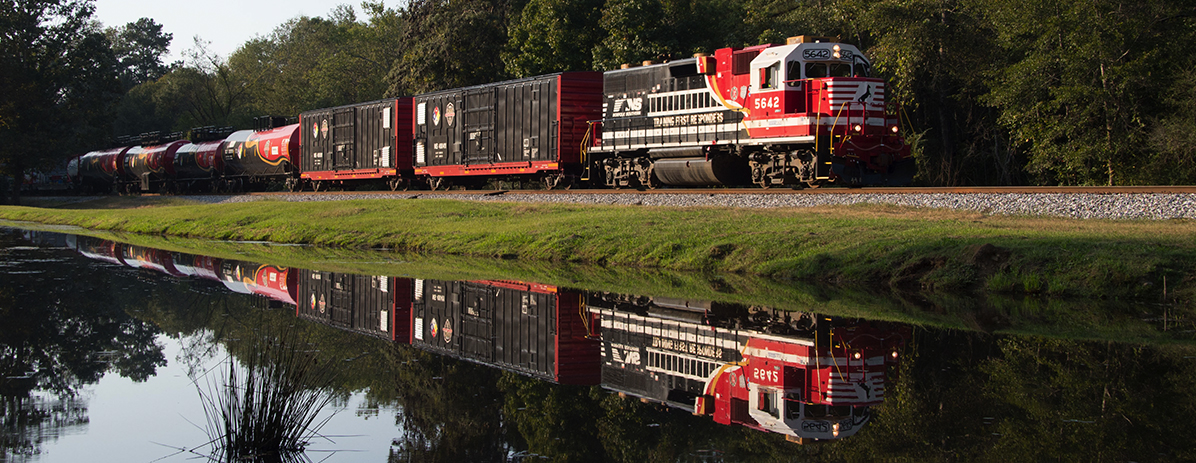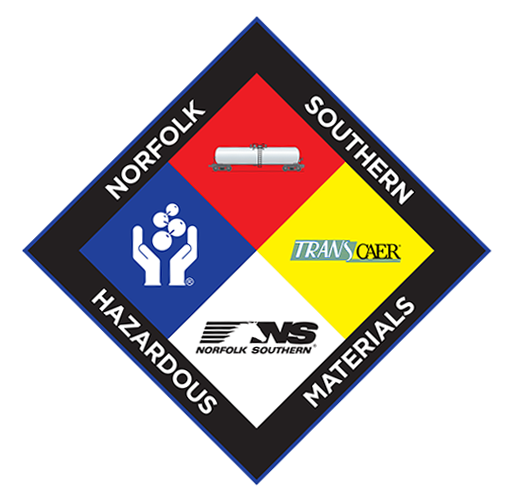

The Federal Mandate: The freight rail industry’s impressive safety record, with 99.997% of hazmat carloads moved without a train accident- related release, and ongoing dedication to becoming even safer is one of the reasons the federal government requires NS and other freight railroads to move hazardous goods.
The hazmat shipments NS moves are vital to our daily lives.
Here are some of the ways we use them every day
The Norfolk Southern Safety & Environmental team is on call 24/7/365 to respond to any emergency across our 22-state network. In addition to our in-house experts, NS has an extensive network of hazmat response contractors and environmental consultants. When planning for an emergency, we work closely with local and state emergency responders to make sure we are unified in our response efforts if something were to happen. Classroom and hands-on training opportunities for first responders are also provided across our network. If you would like more information on our classes, please visit the OAR training page for a list of options near you.

Tank cars built today are vastly improved over earlier generations, with higher grade steel, better thermal protection, improved valves and fittings, often thicker tanks, and other improvements. US Department of Transportation Pipeline and Hazardous Materials Safety Administration (PHMSA) recently released new federal tank car regulations. The new rules set tougher standards for new tank cars used to transport flammable liquids, including crude oil and ethanol, and call for existing cars that carry flammable liquids to be retrofitted with enhanced safety features or, if no upgrades are made, phased out.
In partnership with federal regulatory agencies, Norfolk Southern and the rail industry have taken extensive measures to ensure the safe transport of crude and to help communities prepare and respond to potential incidents. Through voluntary industry agreements or federal directive, following are some of the actions Norfolk Southern has taken.
NS peforms route risk analysis on trains carrying:
These assessments deploy an analytical tool developed by the industry and the federal government that uses 27 risk factors, including population density along a route, local emergency response capability, track quality, and signal systems. Based on results of these analyses, Norfolk Southern has diverted a number of these key crude trains to avoid certain metropolitan areas.
RapidSOS and Norfolk Southern’s solution, which is free to public safety agencies across the U.S., provides first responders quick and easy access to cargo and hazardous material information, enables mutual aid requests, and provides ongoing training. The feature builds on similar programs available in the industry and evolves communication in a way that better integrates first responders, the way they work and how they communicate. https://rapidsos.com/our-latest/norfolk-southen-new-solution-makes-train-incident-response-safer/
Reduced the maximum speed of key crude trains to 40 mph from 50 mph in places designated by Homeland Security officials as High Threat Urban Areas. In April 2015, the railroad reduced the maximum speed for all trains with 20 or more carloads of any flammable liquids, including crude oil or ethanol, to 40 mph in High Threat Urban Areas. The company routinely conducts operating rules checks to ensure continued compliance with this speed.
Made at least one additional internal rail inspection above what is required by federal rules on main lines where key crude trains operate. In addition, the company conducts at least two inspections using a track geometry train to identify potential track safety issues.
Added rail car wheel bearing detectors to existing detectors that alert employees to potentially defective car wheels and help prevent derailments.
Agreed to equip all key crude trains with either distributed locomotive power or two-way telemetry end-of-train devices. Distributing locomotives throughout the train improves braking times, and the two-way devices enable train crews to apply emergency brakes from both ends of the train to stop faster.
Worked with the Association of American Railroads as the industry developed a shared inventory of emergency response resources that could be deployed if an incident occurred on a key crude train route. The inventory includes availability of things such as fire-fighting equipment and contractors that could respond to oil spills. In addition, the company purchased seven additional fire-fighting foam trailers and strategically placed them along crude routes.
Invested in enhancements to crude-by-rail training at the industry’s Security and Emergency Response Training Center in Colorado and provided tuition and travel expenses as part of ongoing efforts to help train first responders across our system.
Continued to advocate for more robust tank car standards for flammable liquid commodities, including petroleum crude oil, with standards incorporating thicker tank shells, thermal protection, and better relief valves, among other specifications.